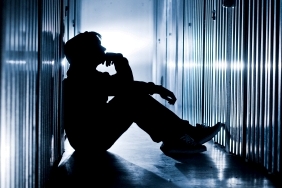Offering Psychological First Aid After a Tragedy

The tragedy in Aurora, Colorado was an extreme act of senseless violence that truly shook our nation. When traumatic events like these take place, a ripple of grief, shock and fear spreads to individuals who are both directly and indirectly impacted. For those of us who live far from Aurora, reactions range from a deep sadness we feel for the victims and their families to new-felt tensions when entering a movie theater. Yet, for those who’ve been more closely affected—friends and family of victims, witnesses, law enforcement, medical personnel, and other first responders—the trauma can have an impact on a deep psychological level.
Psychological First Aid (PFA) is an integral approach to helping victims living in the wake of a traumatic event such as an open act of violence or terror, a natural disaster, a public health emergency, a frightening accident, or even a personal crisis. As the Minnesota Department of Health states, “Emotional distress is not always as visible as physical injury, but it is just as painful and debilitating.” PFA is designed to help people cope with the stress, shock, confusion, fear, feelings of hopelessness, grief, anger, guilt and withdrawal that arise when a catastrophe has occurred.
This state of shock in the wake of tragedy not only impacts people’s long-term psychological stability, but their short term well-being. They may start replaying horrid scenes in their heads or scaring themselves over potential threats and unlikely dangers. Getting people the help they need to regain a sense of safety and security after a shocking event is essential. PFA gives us some very effective tools in helping those who have been traumatized to cope through a crisis and move into the future.
Knowing the steps of PFA is beneficial to anyone who might experience a crisis in their lifetime. It does not require a professional to carry out the steps of care. The process can be learned and employed by anyone who is able make direct contact with individuals affected by crisis. The earlier you can assist someone in gaining a sense of calm and meeting their immediate needs, the better they can cope throughout their state of trauma. These methods may not only be helpful to victims directly impacted by the shooting in Colorado, but to the general population who may at one point or another find themselves in a traumatic scenario. Everyone reacts differently to trauma. By remaining attuned to those who may be most affected, we can employ the following steps to ensure these people optimum care:
- Engage with the person. Early intervention is key to meeting immediate needs and preventing future problems. If you are concerned for someone, seek permission from the person to engage. Be sensitive when approaching. Don’t offer false reassurance or make any demands.
- Ask where they would feel safe. Even in the most frightening of circumstances, it is important to try to seek out a space where a person feels the safest. This may be in a certain room in a shelter, somewhere familiar or somewhere unfamiliar. Whatever this place may be, it will provide the best setting for you to talk.
- Stabilize the person. While some people can self-enforce a state of calm, even in dark circumstances, many people are beside themselves when tragedy strikes. You can offer this person stability by speaking calmly and reassuring them whenever they engage in an activity that is self-soothing. This can be something as simple as a deep or even breath. Comment on these moments by saying, “That was good,” whenever they take a breath. Help them engage in breathing exercises. This will help their physiological system to become regulated.
- Meet the person’s basic needs. After Hurricane Katrina, 9-11 and the earthquake in Haiti, methods of PFA were key in helping people get their needs met. Once calm, individuals are better able to comprehend their own needs to get through the next few minutes, hours, or days. The person may need water or a blanket. Perhaps they need a place to sleep or someone to help them locate their family. Do whatever you can to help this person meet their needs and try to remain calm and attentive in doing so.
- Teach Psychological First Aid. It’s important that people not only practice techniques of PFA, but that they teach local citizens in a community how to do it. This will allow the effects to be maintained long after the emergency teams have moved on. In my local community of Santa Barbara, CA The Glendon Association was a key partner in creating a volunteer Santa Barbara Response Network of individuals who’ve been trained in PFA. Whenever there has been a crisis or trauma in our community, the S.B. Response Network has been able to reach out to those affected before the crisis escalates.
- Connect people to social supports. A sense of connectedness and social support is vital when healing from a disastrous event. People who are hurting must be reached out to and connected with other individuals who have been better able to cope.
- Create coping groups. Once it is possible to do so, it is valuable to form groups in which people can communicate the ways that they themselves have learned to cope with intense emotions of loss, grief, anger, and fear. Sharing techniques on how to cope creates a support system and a collective desire to heal. People can learn from one another and employ the practices that can help them to stay calm and hopeful as they move into the future.
When you are using Psychological First Aid, there are several methods you should avoid—what The New York City Department of Health and and Mental Hygiene calls, “Psychological First Aid Don’ts.” These include:
- Don’t force people to tell their stories. Focus on keeping them calm and meeting their needs.
- Don’t offer false reassurance with statements like, “Everything will be okay.”
- Don’t instruct people on what they should be thinking or feeling.
- Don’t make promises that cannot be kept.
You can see a full list of the do’s and don’ts of Psychological First Aid here. You can also participate in an online training course in Psychological First Aid held by the National Child Traumatic Stress Network here.
There is no simple way, no straight-forward list of do’s and don’ts, to dispel the pain of the people going through real tragedy. However, Psychological First Aid is one of the most effective, immediate ways to help fellow human beings through the initial stage of crisis. The process is intended to lead to post-traumatic growth instead of post-traumatic stress disorder. The hope is that one day, the people impacted may gain a sense of inner peace, calm and hope, shifting this tragedy from a present encounter to a part of their past.









Leave a Reply